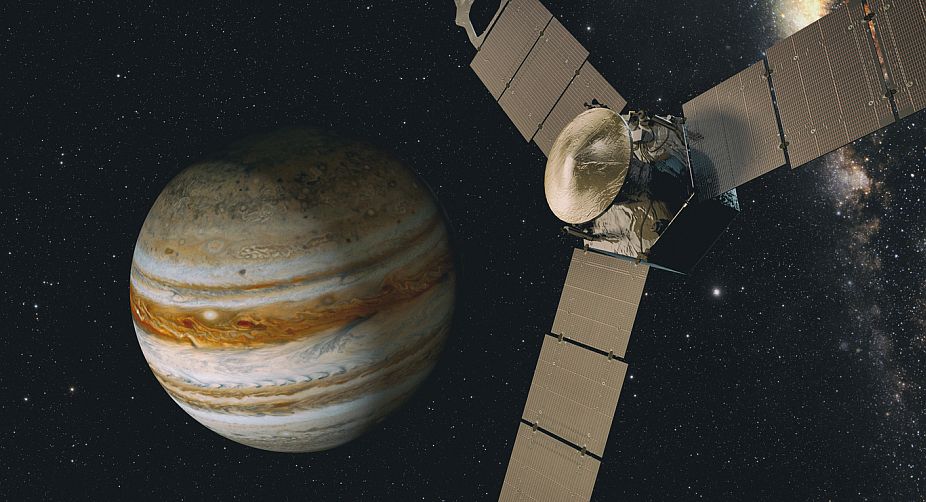NASA mission touches down on Moon aboard Firefly Aerospace lander
The data captured could also benefit humans on Earth by providing insights into how space weather and other cosmic forces impact Earth.

(Photo: Getty Images)
Six years since the Juno spacecraft started its journey, it has completed a close flyby directly over Jupiter's Great Red Spot, NASA has confirmed.
This was humanity's first up-close and personal view of the gigantic feature, the US National Aeronautics and Space Administration (NASA) confirmed.
Advertisement
"My latest #Jupiter science flyby is complete! All science instruments + #JunoCam were operating to collect data," the Juno team tweeted on Tuesday.
Advertisement
Jupiter's Great Spot is a 16,000-km wide storm monitored since 1830 and possibly existing for more than 350 years, Xinhua news agency reported.
Juno celebrated its first anniversary in Jupiter orbit on 4 July.
Just days after, on Monday at 6.55 p.m. the spacecraft reached perijove, the point at which an orbit comes closest to Jupiter's centre.
According to NASA, at the time of perijove, Juno was about 3,500 km above the planet's cloud tops.
Eleven minutes and 33 seconds later, Juno had covered another 39,771 km and was passing directly above the coiling crimson cloud tops of the Great Red Spot.
The spacecraft passed about 9,000 km above the clouds of this iconic feature.
Jupiter's mysterious Great Red Spot is probably the best-known feature of Jupiter.
Data collection of the Great Red Spot is part of Juno's sixth science flyby.
"For generations, people from all over the world and all walks of life have marvelled over the Great Red Spot," Scott Bolton, principal investigator of Juno from the Southwest Research Institute in San Antonio, said in a statement.
"Now we are finally going to see what this storm looks like up-close and personal."
All of Juno's science instruments as well as its imager, JunoCam, were operating during the flyby, collecting data that are now being returned to Earth.
Juno's next close flyby of Jupiter will occur on 1 September, NASA said.
On completion of its exactly one year in Jupiter orbit, the spacecraft had chalked up about 114.5 million km in orbit around the giant planet.
Juno's name comes from Roman mythology. The mythical god Jupiter drew a veil of clouds around himself to hide his mischief, but his wife, goddess Juno, was able to peer through the clouds and reveal his true nature.
The spacecraft was launched on 5 August, 2011, from Cape Canaveral Air Force Station in Florida.
Without doubt, the 1.1-billion-dollar mission would provide answers to many questions about Jupiter, and help reveal some secrets about other planets in our solar system, including Earth, according to NASA.
Early science results from the Juno mission portray the largest planet in our solar system as a turbulent world, with an intriguingly complex interior structure, energetic polar aurora, and huge polar cyclones, NASA said.
Advertisement